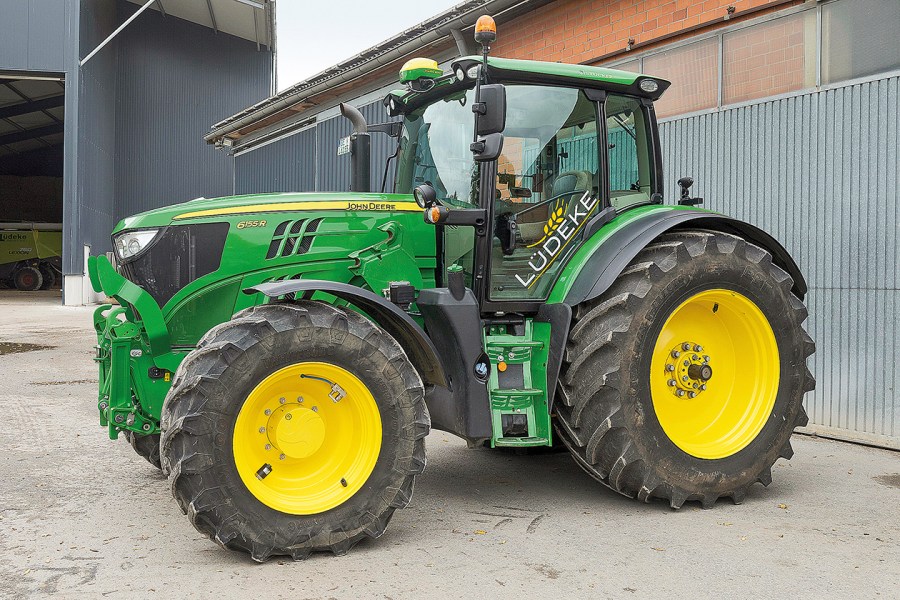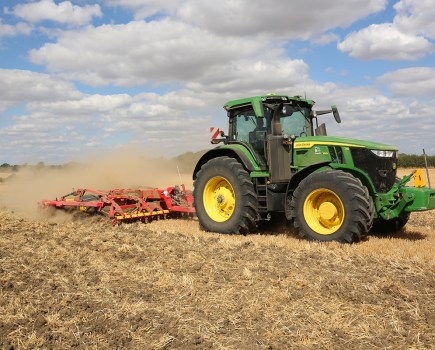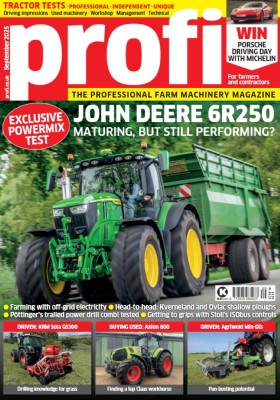TECHNICAL: The VariQtire tyre pressure control system not only has internal mounted rotary unions, but a single-line system that offers the reliability of a two-line set-up. We chat to maker IWN to learn how it works.
Basically, there are two different ways of adjusting the pressure in central tyre inflation systems — single-line and dual-line — and the pros and cons
of both are outlined on the next page.
Now IWN says it has succeeded in combining the advantages of the dual-line system with those of a single-line approach. At the heart of the VariQtire development is a cunning valve unit that is fitted to each wheel. When air hose pressure is 3.0 bar or less, the valve opens and allows the air to escape from the tyre, getting it ready for field work.
Alternatively, when the pressure is increased to more than 5.0 bar, the piston in the valve switches so no air can escape from the wheel and the tyre starts to inflate. We can’t tell you any more about the inner workings of the valve for patent reasons.
Radio-controlled pressure monitoring
IWN has also opted for a neat idea to monitor the pressure in each tyre. This consists of a mechanical pressure relief valve and a radio sensor for pressure monitoring. These are fitted in an extra hole in the rim. The stainless steel relief valve is set to 2.7 bar to create a safety margin.
The pressure sensors have a long-lasting battery (capable of lasting five years, says the maker) and send their information to the radio receiver every two minutes. The receiver, together with all of the electronics components, is housed under a black cover. If the pressure changes by more than 0.1 bar within 20 seconds when filling, draining or in the event of a puncture, the sensor switches to ‘alarm mode’ and will then send a new reading every 10 seconds for 6 minutes. The readings are shown on a separate in-cab display, which is actually a Topcon Opus A3 screen.
Central valve unit
On the featured John Deere 6155R, the valve unit was fixed to the left-hand loader bracket. This central position makes routing all of the various hoses relatively straightforward. The air supply line is connected to the tractor’s air brake system. If the pressure in the line drops to less than a figure of 5.0 bar, the VariQtire system is switched off until the pressure exceeds 6.0 bar.
The valve block also has a connection for an additional compressor as well as a fifth outlet for adjusting the pressure on a trailer or tanker. The remaining outlets are for the four tractors wheels, which are connected with ½” PU pipes (12mm Tecalan hoses).
Internal rotary unions
This brings us to the internal rotary unions — which are also an inhouse development. They are made from hard-coated aluminium, which makes the surface of the lightweight material particularly wear-resistant. The stator is attached to the axle housing with a torque arm, which has spherical caps, and no axial forces are transmitted.
The rotor of the rotary union consists of two bolted individual rings that are connected to the stator in four positions and a ball race. At the same time, contouring cords made of PTFE-carbon seal the space in between the rotor and stator. These contouring cords are only compressed when the rotary union is under pressure. For the rest of the time the seals are virtually wear-free.
The air is supplied axially to the stator. By comparison, the rotor has an axial and a radial outlet in order to be able to guide the hose to the wheel valve as easily as possible, depending on the installation situation.
The diameter of the rotary unions is 255- 475mm to suit common flange sizes, but other dimension are also possible. There is also a grease nipple to lube the ball bearing and labyrinth seal. Initial experience, though, shows that even after 2,000 hours no lube has been required … as of yet.
Simple control box
A ‘high’ and ‘low’ pressure can or must be set for each wheel separately on the control terminal. This can make sense when operating a hedgecutter, for example. However, IWN is working on setting the pressure by axle and on a memory function for various pressure profiles for different jobs (ISObus integration is also on the cards). For now, you simply press the ‘Hi’ or ‘Lo’ button, and the system starts de/inflating to the target pressure. We set the pressure on the John Deere 6155R, which was booted on 480/70 R30 on the front and VF710/60 R42 at the back, to 0.8 and 1.6 bar. The standard compressor took 12 minutes to inflate the tyres. To avoid large differences in the tyre pressures, the tyres are automatically filled in 0.2 bar increments. If the system detects enough air is available, such as from an additional compressor, the tyres are inflated simultaneously, which should reduce the inflation time to less than four minutes. IWN is also working on solutions for compressors with their own drive and control system.
To release the air, all four wheel valves are always opened at the same time and air can escape directly through a silencer. This graph shows that the front wheels reach 0.8 bar after just 20 seconds, and, even on the rear axle, it takes less than 1.5 minutes to reach 0.8 bar — both very good results. According to IWN, the system should then remain active for another 20 seconds in order to make any necessary corrections. In our case, this process took another two and a half minutes, though this is attributed to the design still being a pre-production system.
Where can you buy it?
Speaking of pre-production status, currently, the VariQtire is not on the open market just yet. If everything goes smoothly, the system should be ready for production later this year with its official launch at Agritechnica.
IWN remains coy about the price. However, we hope the relatively straightforward design means it is still in the four-digit range. In any event, the VariQtire is an interesting concept, and we’ll update you when we know more.
For more up-to-date farming news click here and subscribe now to profi and save.






